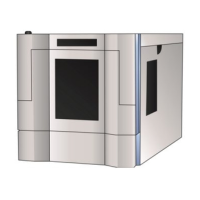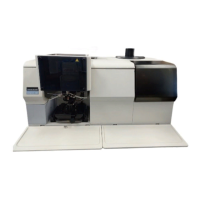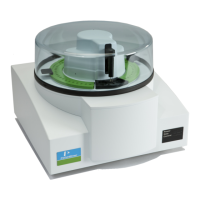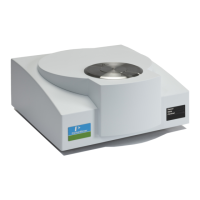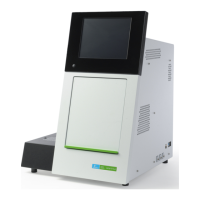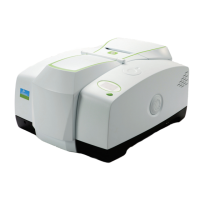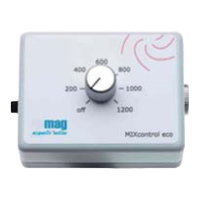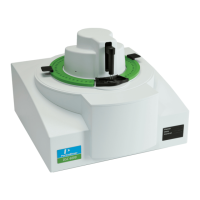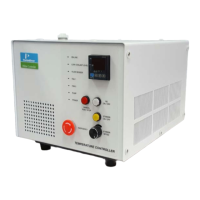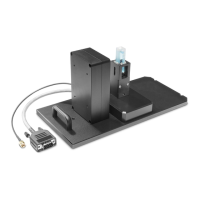ASSAYS
PerkinElmer Life and Analytical Sciences 83
tSIE
(transformed Spectral Index of the External Standard). Using an external Barium-
133 standard source, this method assigns a numeric value to the quench
associated with a sample. This determination is independent of the quantity of
radioactivity in the sample and its count rate. The lower the tSIE value, the more
the sample is being quenched. A tSIE value of 1000 represents a completely
unquenched sample. Accurate DPM values can be determined for samples with
tSIE values as low as 10. To ensure good count statistics, the external standard is
typically counted to a 0.5% two sigma counting error, where the gross counts
equal 160,000. tSIE is the most accurate of the quench indicator options and is
typically used for low count rate, variable quench, single label samples.
tSIE/AEC
(transformed Spectral Index of External standards coupled to Automatic Efficiency
Correction). tSIE assigns a numeric value to the quench associated with a sample.
As quench varies, the AEC automatically monitors and adjusts the counting region
to exclude unwanted background. This setting is typically used for dual and triple
label experiments with variable quench samples where optimal region settings are
desired.
SIS
(Spectral Index of the Sample) SIS assigns a numeric value to the quench
associated with a sample. The SIS is determined from the spectral shape of the
sample and is based on actual sample counts. The SIS setting is typically used to
monitor the quench level in single label, high count rate samples for CPM assays
or in single label Cherenkov counting.
Note: By using one of the count termination parameters, this count
time may be shortened.
External Standard Terminator
Select a length of time the external standard is counted for calculating the quench
index. Selecting 0.5 2s% instead of an increment of time will allow counting to
occur until gross counts of 160,000 are measured. This provides statistical
accuracy of 0.5% (at 95% confidence) for the tSIE parameter. You may elect to
use the External Standard Terminator only if tSIE or tSIE/AEC are chosen as
quench indicators.
Pre-count Delay
Enter the length of time you would like the samples to sit in the closed detection
chamber prior to counting. This process is “dark adaption”; it will reduce
luminescence originating from the samples. Luminescence can distort the count
statistics of the sample and is particularly problematic with low count rate samples
and long count times.

